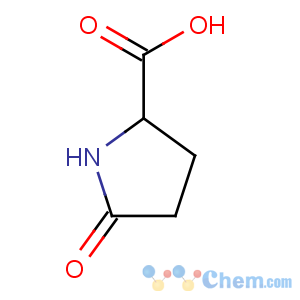D-Pyroglutamic acid
-
- Product NameD-Pyroglutamic acid
- CAS No.4042-36-8
- Purity98% or order
- Min Quantity1000Kilograms
- Price70~90

 View Contact Detail
View Contact Detail
-
 Molecular Structure
Molecular Structure
Detailed Description
Pyroglutamic acid (also known as PCA, 5-oxoproline, pidolic acid, or pyroglutamate for its basic form) is an uncommon and little studied amino acid derivative in which the free amino group of glutamic acid or glutamine cyclizes to form a lactam. It is a metabolite in the glutathione cycle that is converted to glutamate by 5-oxoprolinase. Pyroglutamate is found in many proteins including bacteriorhodopsin. N-terminal glutamic acid and glutamine residues can spontaneously cyclize to become pyroglutamate. This is one of several forms of blocked N-terminals which present a problem for N-terminal sequencing using Edman chemistry, which requires a free primary amino group not present in pyroglutamic acid. The enzyme pyroglutamate aminopeptidase can restore a free N-terminus by cleaving off the pyroglutamate residue.Pyroglutamic acid, also known as pidolic acid, exists as two distinct enantiomers: